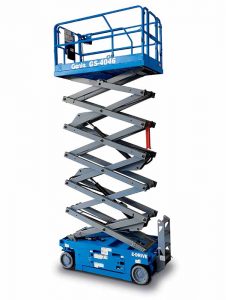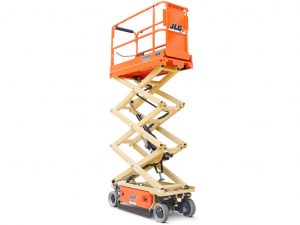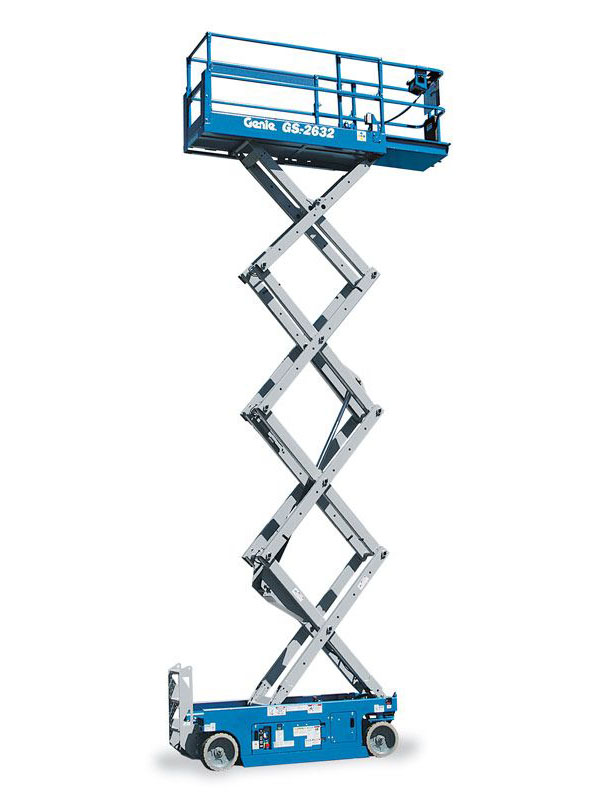When it comes to projects in tight spaces, the slab scissor lift stands out as the ideal choice. Offering versatility, mobility, and usability indoors and outdoors, this lift can be a valuable asset for construction or work projects. However, choosing the right scissor lift can be overwhelming. By understanding the scope of your job, you can narrow down the options and make a more informed decision.
Benefits of Using Scissor Lifts
Scissor lifts offer versatile platforms that not only provide additional horizontal workspace but also come with the benefit of emitting zero emissions indoors. Here are some key advantages of scissor lifts:
- Electric scissor lifts are widely used and have the advantage of emitting no exhaust.
- Slab scissor lifts are particularly well-suited for smaller indoor spaces such as buildings, construction sites, and warehouses.
- They are ideal for a wide range of tasks, including construction, electrical work, HVAC installation, painting, pressure washing, manufacturing, and even for artists creating murals.
- The lifts come in varying heights and weight capacities, and their stability is affected by factors such as material load, worker capacity, and height limits.
- When it comes to higher heights, lower load weights are required to ensure stability.
Factors to Consider When Choosing a Scissor Lift
 When purchasing or renting elevated work platforms, it’s important to consider key factors such as:
When purchasing or renting elevated work platforms, it’s important to consider key factors such as:
- Size
- Personnel count
- Weight capacity for tools and materials
Manufacturers of mobile elevated work platforms (MEWPs) prioritize safety by complying with OSHA standards and incorporating features like:
- Guard rails
- Emergency shut-offs.
- Speed limitations
- Warning alarms
However, it is of utmost importance to provide proper operator training to ensure optimal stability, avoid potential hazards such as uneven ground, account for wind conditions, and prevent tipping accidents.
JLG 1930ES Vs Genie GS-1930: Which One is Better?
In a side-by-side comparison, the JLG 1930ES and the Genie GS-1930 offer similar features but have slight differences in specifications.
Genie GS-1930:
- Highly regarded for indoor mobility and maneuverability in tight spaces.

- Can pass through single doors.
- 24V DC electric motor for quiet operation and zero emissions.
- Maximum platform height of 19 ft.
- Spacious 6 ft. working area, accommodating two individuals and their tools.
- Additional 36-inch platform extension.
- Safety features include fixed rail guards, alarms, and flashing beacons.
JLG 1930ES:
- Excels in job site performance.
- Extended battery life for double the operating time and enhanced productivity.
- 30-inch-wide platform for easy navigation through tight doorways and aisles.
- Maximum platform height of 18 ft. 9 in., providing a working height of 24 ft. 9 in.
- Durable design with only two hydraulic hoses and four fittings, reducing the risk of leaks and service calls.
- Safety features include SkySense technology for object detection, motion alarms, tilt alarms, descend warnings, and a horn.
As you can see, both lifts offer similar lift capacities, extensions, drive speeds, and safety technologies. However, there are slight differences in specifications such as working height, platform dimensions, turning radius, gradeability, and warranty coverage.
The Genie GS-1930 has a slightly higher working height, while the JLG 1930ES offers a wider platform. The JLG lift also has a higher gradeability and a unique SkySense technology for enhanced safety. Regarding pricing, the JLG 1930ES is priced at $14,498, while the Genie GS-1930 is slightly lower at $14,299.
Conclusion
Both the JLG and Genie scissor lifts are highly versatile machines designed to enhance productivity, efficiency, and safety. While they offer similar work features, there are slight differences in their technological options.
By considering your specific needs, comparing specifications, and factoring in the pricing, you can make an informed decision about which lift is the best fit for your project.
